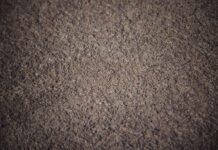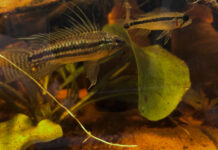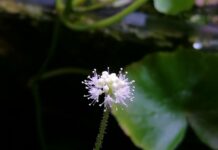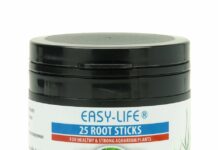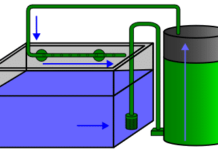In this article we will look at the Easy-Life fertilisation protocol, showing the various products that make up the protocol and how to best use them.

Easy-Life was founded in 1998 in the Netherlands and has since developed a unique separate element fertilisation protocol, which consists of a base fertiliser to be supplemented as required.
Let us now look at the components of this protocol.
Trace elements supplements
Easy-Life Profito
Profito is the basic product in the protocol and should be dosed regularly, adjusting slightly the doses according to the response of the plants.
It contains trace elements and chelated iron, magnesium and potassium.
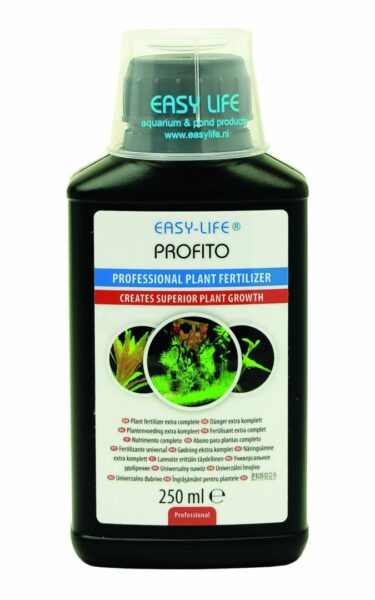
Profito composition: 1% potassium oxide (= 0.83% potassium), 0.31% magnesium oxide (= 0.18% magnesium), 0.24% iron, 0.1% manganese, 0.02% boron, 0.003% copper, 0.003% aluminium, 0.003% cobalt, 0.003% nickel, 0.003% lithium, 0.003% vanadium, 0.002% zinc, 0.002% molybdenum, 0.002% selenium, 0.002% tellurium, 0.002% niobium, 0.001% scandium.
Chelating agents: EDTA, DTPA, NTA.
Dosage: 10 ml per 100 litres, once a week. It is advisable to increase or decrease the dosage by 40% according to plant response. It is also possible to dose 1/7 of the weekly dose daily.
Easy-Life Ferro
Ferro, as the name suggests (in Italian, Ferro means Iron), is a chelated iron supplement. It also contains a small percentage of potassium.
It should be used in cases where an iron deficiency is detected, for example when the leaves turn yellow (chlorosis).
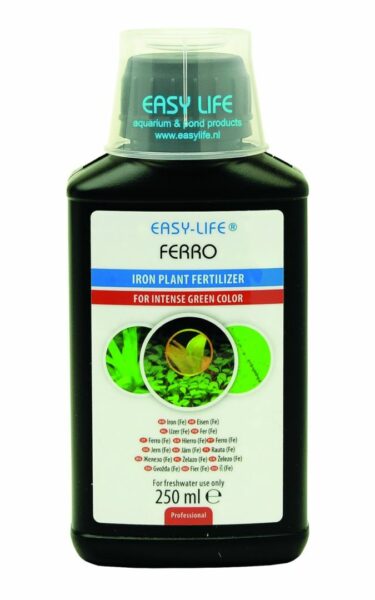
Ferro composition: 1% iron chelated with DTPA, 0.35% potassium oxide (= 0.29% potassium).
Dosage: 5 ml per 100 litres, equivalent to 0.5 mg/l iron, every week until the deficiency is resolved.
Macro-nutrients supplements
Easy-Life Nitro
This is a nitrate and potassium supplement; it is in fact a solution of potassium nitrate.
Unlike other protocols, Nitro does not use ammonia or urea nitrogen, so the nitrate supply is fully and immediately detectable by a nitrate test.
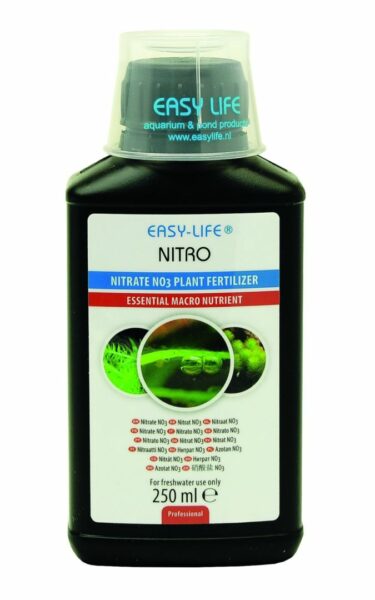
Nitro composition: 17.5% potassium nitrate.
Dosage: 2 ml per 100 litres increase nitrate by 2 mg/l and potassium by 1.3 mg/l. Try to maintain a nitrate concentration around 10-20 mg/l.
Easy-Life Fosfo
Fosfo is a phosphate supplement. Use in case of slow growth or stunted plants.
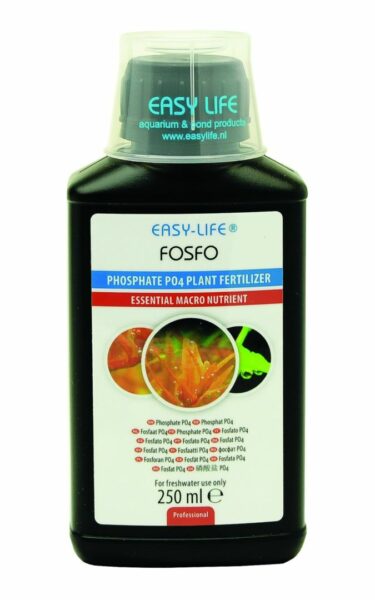
Fosfo composition: 0.1% potassium phosphate.
Dosage: 2 ml per 100 litres increases phosphate by 0.1 mg/l. Try to maintain a phosphate concentration between 0.5 and 1 mg/l.
Easy-Life Kalium-Potassium
Kalium-Potassium supplements potassium. Use it if the potassium already introduced with Profito, Iron or Nitro is insufficient: white or discoloured leaves at the top of the plant or holes in the leaves are symptoms of potassium deficiency.
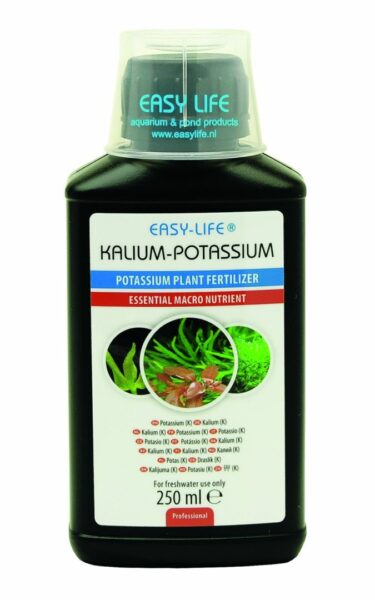
Kalium-Potassium composition: 10% potassium sulphate.
Dosage: 10 ml per 100 litres increases potassium by 4 mg/l. Use weekly until deficiency is resolved.
Other components
Easy-Life Root Sticks
Root Sticks are sticks of clay, naturally rich in iron, enriched with trace elements, to be buried in the substrate.
They are particularly suitable for root-feeding plants such as Cryptocoryne, Echinodorus or Nymphaea lotus. They can be broken up.
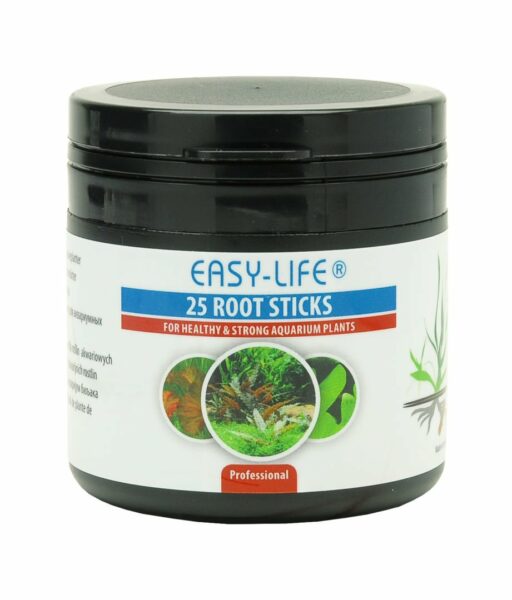
Root Sticks composition: not declared by manufacturer, but it is likely that the sticks contain iron and trace elements.
Dosage: apply one piece of stick every 10 cm approx. A stick may last several months.
Easy-Life EasyCarbo
EasyCarbo is a carbon supplement. It is a solution of glutaraldehyde, a carbon compound that is taken up by plants to synthesise the sugars they need.
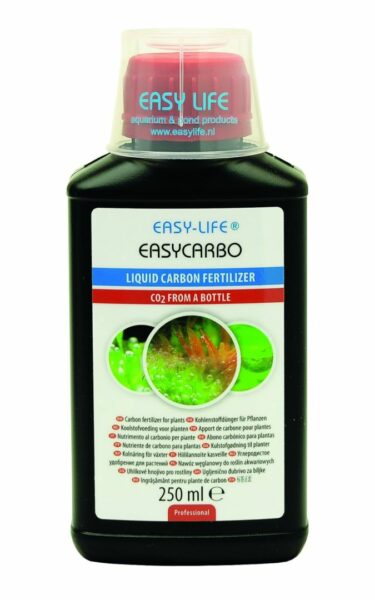
Composition of EasyCarbo: glutaraldehyde solution.
Dosage: 1 to 4 ml per day per 100 litres, depending on the needs of the plants. Do not exceed the recommended dosage.

